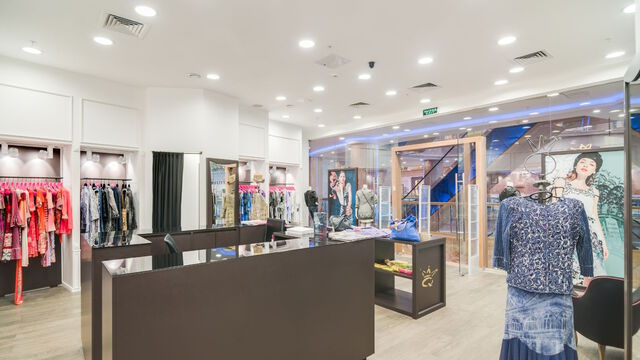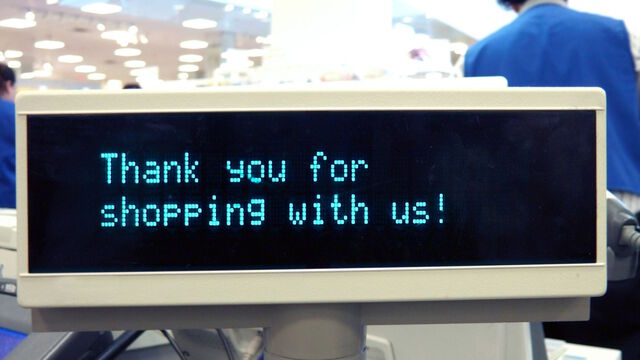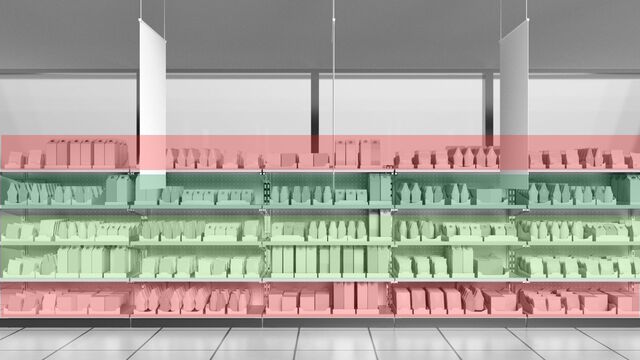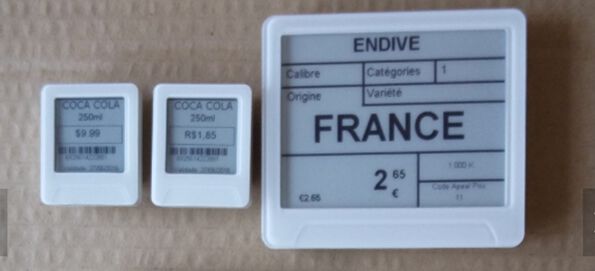Which zones exist in Store Layouts?
- Entrance areas
- Main lanes
- Transport zones (elevators, escalators)
- Observation zones
- Checkout areas
- Exit zone
Retail space zoning in store layouts is an important tool for improving the efficiency of sales processes. For the zones to be effective, assortment groups must be clearly defined. Nothing is left to chance!
Each product group is assigned a specific place in the sales area, considering product characteristics, demand, and appearance. Despite taking many factors into account, it is not always possible to turn all sales areas into top-selling zones.

Customers notice a part of the sales area with less impact. What can you do about it? In this article, you will learn significant details about top-selling zones in retail and how you can use digital signage solutions to generate more sales even from lower-selling zones.
Various studies from the field of retail market research examine the influence of different retail sales zones on consumer behavior. Based on the results of these studies, methods for optimal visual merchandising and product placement have been developed.
Since then, these methods have been widely used. Have you wondered why every supermarket has a similar layout? Properly applied, these methods help to make your store sales effective.
Take layout planning very seriously to generate the highest possible customer loyalty. The planning of vending zones plays an essential role in this. Optimal zoning includes not only well-designed customer routes, but also well-chosen areas for shop windows, entrances, checkouts and sales areas.
As an effective marketing tool, an optimally planned salesroom makes a significant contribution to sales success. When it comes to the placement of goods in retail, owners often distinguish between high-sales and low-sales zones.
Shop windows only serve to stimulate the interest of customers and create incentives to buy. Assuming, they are properly decorated, store windows help to bring customers into the store. The actual purchase decision, on the other hand, only takes place inside the store.
Entrance areas represent typical low-sales store zones. This is because the probability of being disturbed in the entrance area is relatively high. The tendency of consumers to reach for their wallets in the entrance area is therefore limited.
Although the entrance area belongs to low-sales zones, it has an interesting characteristic. Market researchers found that more than 80 percent of consumers who are in an enclosed space move from right to left, namely counterclockwise.
Be sure to consider this fact when planning the entrance and exit areas. It is best to plan the store so that your customers enter the sales areas from the right and leave from the left.
Main lanes are one of the most important areas of a store. These strong selling zones generate the most revenue. How successful the sale of goods takes place literally depends on the organization of the main customer traffic routes.

Most paths in stores direct the flow of customers counterclockwise. It is essential to visually highlight the main sales area with markings or digital signs.
Zones for transporting customers, such as elevators or stair areas, also count as high-selling zones. This is where digital displays with quickly understandable content create additional buying incentives.
These zones predominantly exist outside the main flow of customers. In drugstores or groceries stores, these often consist of centrally placed shelves with cosmetic products. In electronics stores, there are product isles with the latest technology from well-known electronics equipment manufacturers.
To encourage customers for interaction and direct their attention to the latest products, digital signage solutions are preferred in these areas. This allows customers to display barcode scanners or relevant product information on a digital monitor, for example.
The checkout area in retail is one of the most profitable areas of a store. This is where many impulse items are purchased. While customers wait in the queue, they have enough time to look at products near the checkout and buy.
Traditionally, impulse buys include goods such as candy, chewing gum, magazines, cigarettes, and batteries. But they also include various small household goods and other everyday products. The aim of traders is to influence the customer's decision to buy in such high-selling zones. This is best achieved by placing merchandise at eye level.
Well-placed digital advertising spaces are particularly effective in waiting areas. They entertain customers and significantly increase sales through spontaneous buys.
Shopping experiences should be remembered positively by your customers as emotional events. Take the opportunity to thank your customers for shopping at the exit. Customers will love it and will be happy to come back for their next shopping trip. Whether it's a personal thank-you note from employees or a display on digital monitors in the exit area, both options are welcome.

How can we upgrade low-sales zones? One attractive option for directing customer flow is the use of digital customer stoppers. After all, analog customer stoppers have long since become obsolete and digital display boards are becoming increasingly popular due to numerous advantages. Bright digital displays generate the desired attention from customers and are an effective advertising tool.
Digital info boards perform particularly well in the entrance area. They inform customers and advertise products. With content control via a digital signage platform, advertising content can be customized and updated daily. This means your customers will never miss out on product news or new discount promotions again. Digital customer stoppers are one of the most popular measures for enhancing low-sales zones.
According to various studies, proper placement of goods on the shelf increases sales by 80 – 300 percent. Just as the basic layout of a store is divided into zones, goods arranged on shelves similarly. The product range finds its place in shelf zones depending on its characteristics.
The sorting of products, often based on the principle of the “4 levels on the shelf”. Well-designed sales levels on the shelf ensure that your customers find what they are looking for quickly on the one hand and are encouraged to make spontaneous purchases on the other. Shelf levels in retail are usually divided into a stretch-level, eye-level, waist-level, knee/ankle-level.

To reach the products, the customer has to stretch in this zone. The so-called stretching zone is typically located in the upper shelf area at a height of 160 cm or more.
This zone is among the most popular types of retail placement. Most shoppers love this zone because products are directly in their field of vision and are always within reach. This is also where most impulse purchases take place. Due to the right-hand urge of customers, it is advisable to place desirable products on the front right wall in the viewing zone (120 – 160 cm). This way of presenting goods on the shelf is the most advantageous – the main stream of people will definitely notice the product in this place.
Customers also like to take products placed in the waist-level. Occasionally, it is also called touch-level. It is located between 80 – 120 cm. In this level, often special offers find their place. Furthermore, always needed standard products are often placed in the waist-level.
This low-sales zone typically contains products that are less in demand. Customer do not prefer the ankle-level zone in the supermarket. The knee-level begins after the waist-level from a height of about 80 cm.
Products in low-sales shelf zones require stronger stimuli to get customers to notice them.
Electronic price tags are different sized displays that show product and price information in zones of the sale. The technology of electronic price tags has existed for about 20 years, and since then, more and more retailers have been using it successfully.

At first glance, it looks like digital displays only help to save on consumables for printing paper price tags. In fact, they are an excellent tool for attracting customers. Especially if the price tags are connected to the enterprise resource planning system.
The use of electronic price tags enables peak hour promotions, where the price of an item only applies within a certain time of day. When using paper price tags, such promotions are practically impossible. In addition, prices on electronic displays allow for updating at any time. This saves resources and valuable time of your staff.
Digital signage technologies excellently support the promotion of weak sales regions. Networked digital price tags make it easy to implement promotions. Small displays on the shelves provide additional stimuli. Digital customer stoppers generate attention and impulse buys increase in the checkout area thanks to the infotainment of digital screens.
The following articles might interest you:
Germany
☎ +49 (0) 511 - 96 499 560
Local court Hanover
HRB 221981
VAT-Id: DE 281 780 194